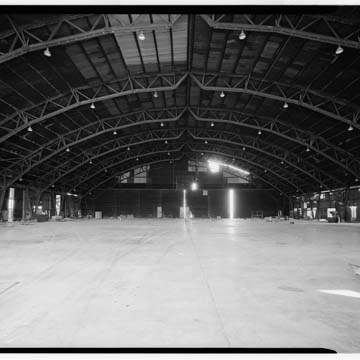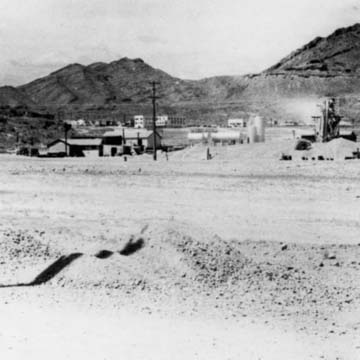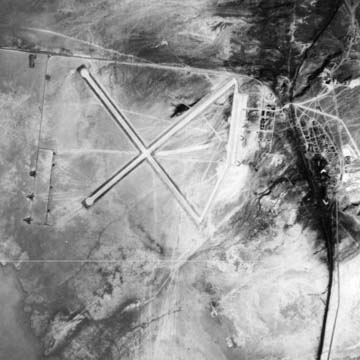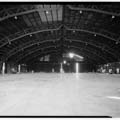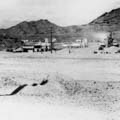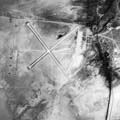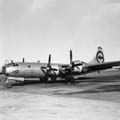Wendover Air Force Base (AFB) was a temporary fighter pilot training base in operation from 1940 to 1962. It was built on the salt flats of the prehistoric Lake Bonneville, on the Nevada border approximately 110 miles due west of hilly Salt Lake City. In the 1940s, the invention of the all-metal plane, with exponentially greater airspeeds of 400 miles per hour and the ability to fly at an altitude of 30,000 feet, was accompanied by the construction of temporary training bases like Wendover. Construction began in winter 1940–1941 on two 150 x 7,000–foot runways, taxi strips, and a plane anchorage area. By spring, four runways had been paved, and the initial buildings erected: four barracks, officers’ quarters, a mess hall, administration building, warehouses, a dispensary, a signal office, ammunition storehouses, a powerhouse, and a theater. These wood-frame structures were covered in tarpaper, and were meant to be temporary. With the onset of World War II, a larger building program emerged in 1942–1943, including a civilian housing project, Nev-Tah Apartments, built under the Federal Housing Administration. By the end of World War II, the base consisted of additional aircraft hangars and military housing, various maintenance buildings, a 300-bed hospital, a mess hall, gymnasium, chapel, swimming pool, and entertainment facilities including a bowling alley and two theaters. In June 1943 the base began receiving a steady flow of water via a pipeline from Pilot Peak, around 32 miles northwest of the base. By the end of the war, the base consisted of 668 buildings.
A barricade separated the 1,875,539-acre base from the small civilian town of Wendover immediately to the north, which was established in 1908 as a stop on the Western Pacific Railroad. The facilities were arranged along a rectangular grid whose east-west side was approximately half the width of its north-south side, with the runways occupying the grid’s center. Housing was located on the south side of the runways, and the administrative offices, hangars, training facilities, and other military buildings on the north; a periphery road connected the entire complex.
The base’s location was ideal for bomber practice, since the disturbed area from the bombs stood out clearly against the white salt flats. Wendover AFB was the site of training for the 509th Composite Group, which carried out the atomic bombings of Hiroshima and Nagasaki. Training took place in the colossal Enola Gay B-29 Hangar, a prefabricated, Quonset hut structure with corrugated steel panels over its parabolic arches.
The base continued to serve as a military training facility after World War II until 1976, when the Air Force turned over the site to the City of Wendover for use as a municipal airport. By that time, many of the buildings had either been destroyed by fire or dismantled; of the original structures, only 128 remained. The Historic Wendover Airfield Foundation now operates a museum on the site and offers tours to the public. Restoration of the remaining structures is ongoing.
References
Anderson, Garn. “The History of Wendover 1908-1969.” Unpublished manuscript. Utah State Historical Society, Salt Lake City, Utah.
Rice, Helen. History of Ogden Air Material Area Hill Air Force Base , Utah 1934-60 . Wendover, UT: Hill Air Force Base, 1963.






